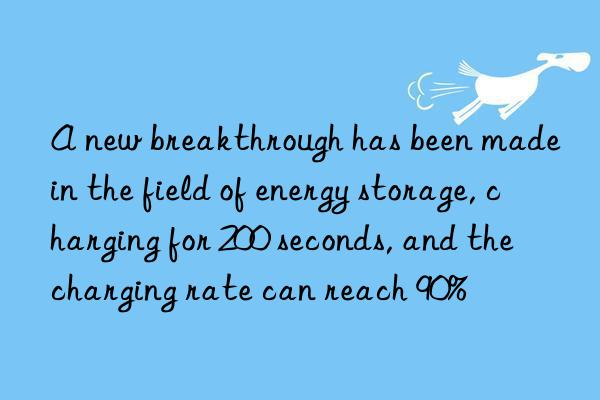
A few days ago, Wang Bo, a young teacher from the School of Chemical Engineering and Chemistry of Harbin Institute of Technology, made new progress in the research of electrochemical hybrid energy storage. It only needs to be charged for 200 seconds, and the charging rate can reach 90%.
Wang Bo, with the support of the National Natural Science Foundation of China and the Harbin Institute of Technology Research Innovation Fund, proposed a strategy to construct a multi-level structure "dual continuous active channel" (ion and electron) hybrid energy storage material.
It is understood that currently widely used chemical power sources such as lithium-ion batteries, lead-acid batteries, and capacitors generally use a single electrochemical energy storage material as the active material of their electrodes. The performance of these power sources is limited by the performance of a single active material in the electrodes, resulting in limited energy storage capacity. According to the energy storage characteristics of different active materials, Bo Wang successfully designed a series of hybrid energy storage materials, realized the in-situ recombination of different active materials and efficient synergy in the energy storage process, and further revealed the electrochemical hybrid storage materials through theoretical research. The energy mechanism provides an important theoretical basis and research method for the development of the field of electrochemical hybrid energy storage. The lithium iron phosphate/carbon nanotube and graphene multi-level structure hybrid energy storage material synthesized according to this strategy has excellent electrochemical performance, and the charging rate can reach 90% after fast charging for 200 seconds. It is expected to realize the electric vehicle using it as the cathode material. fast charging.
The research results were published in the famous journals "Advanced Energy Materials" and "Energy and Environmental Science" in the field of energy and materials



 微信扫一扫打赏
微信扫一扫打赏
